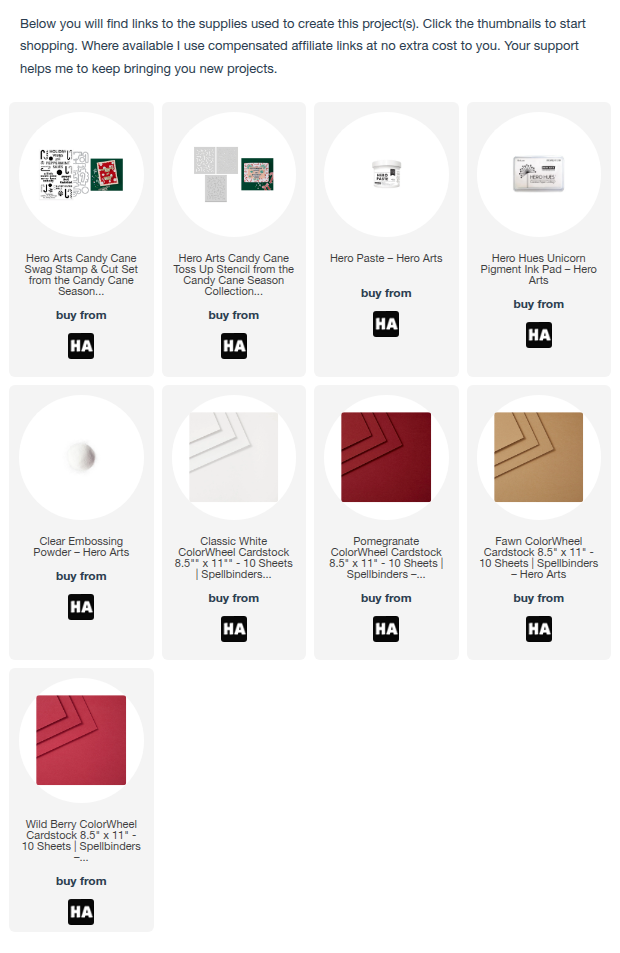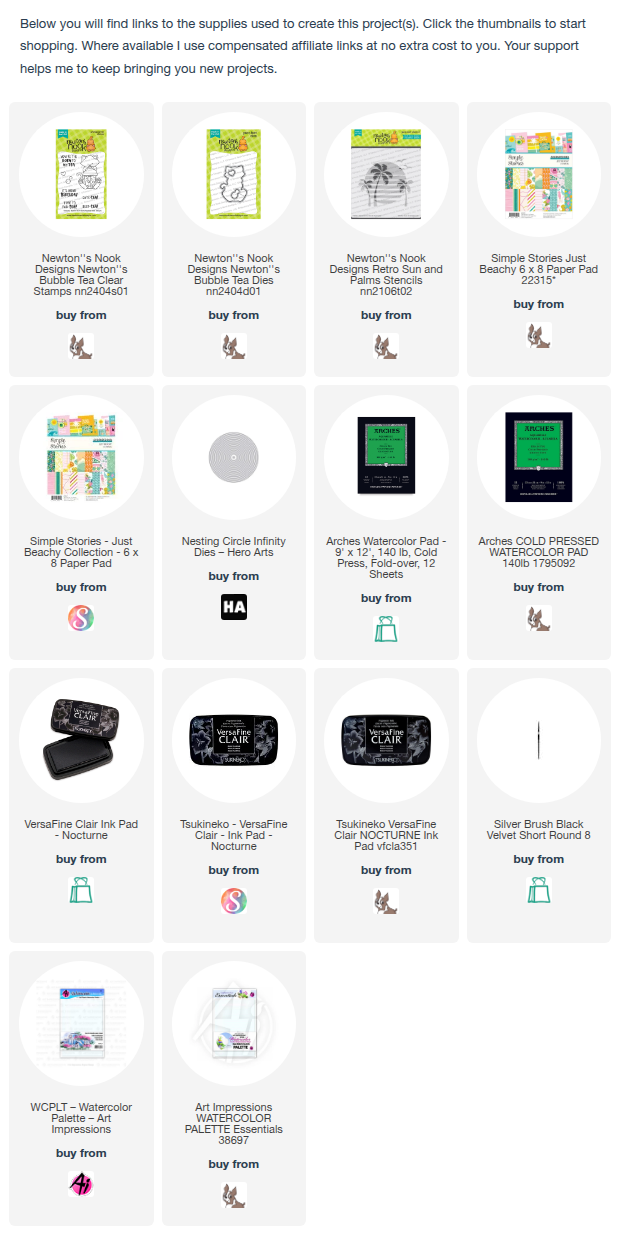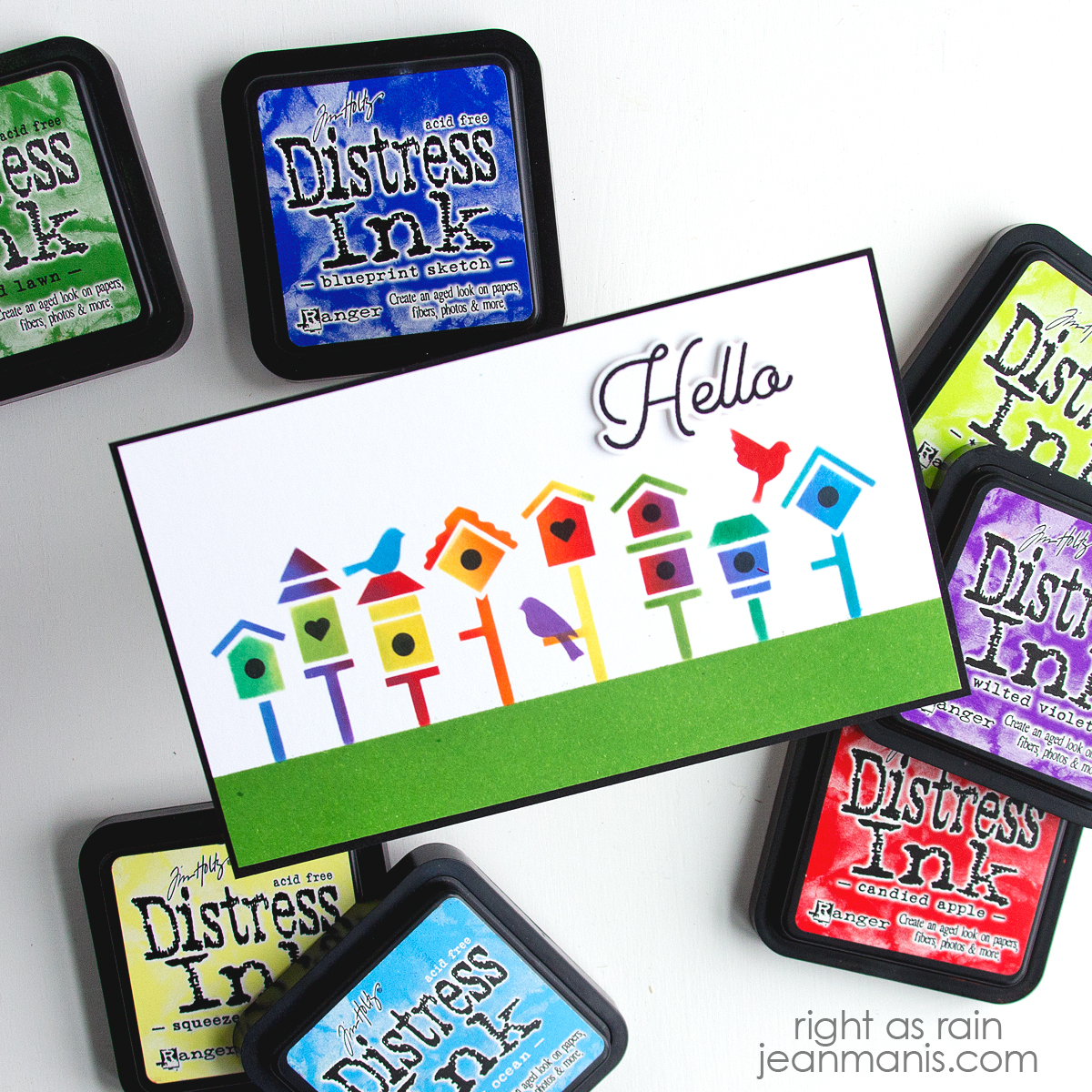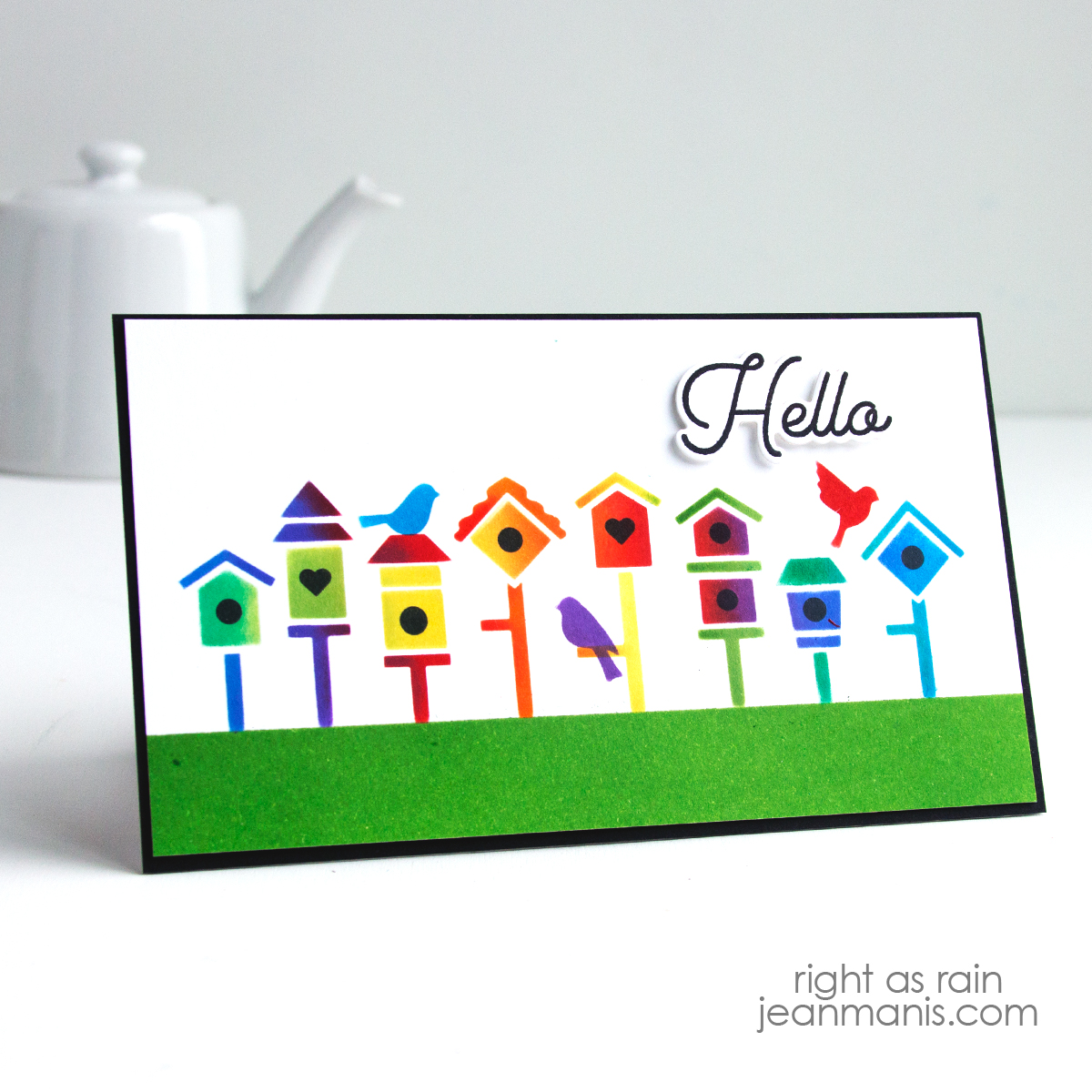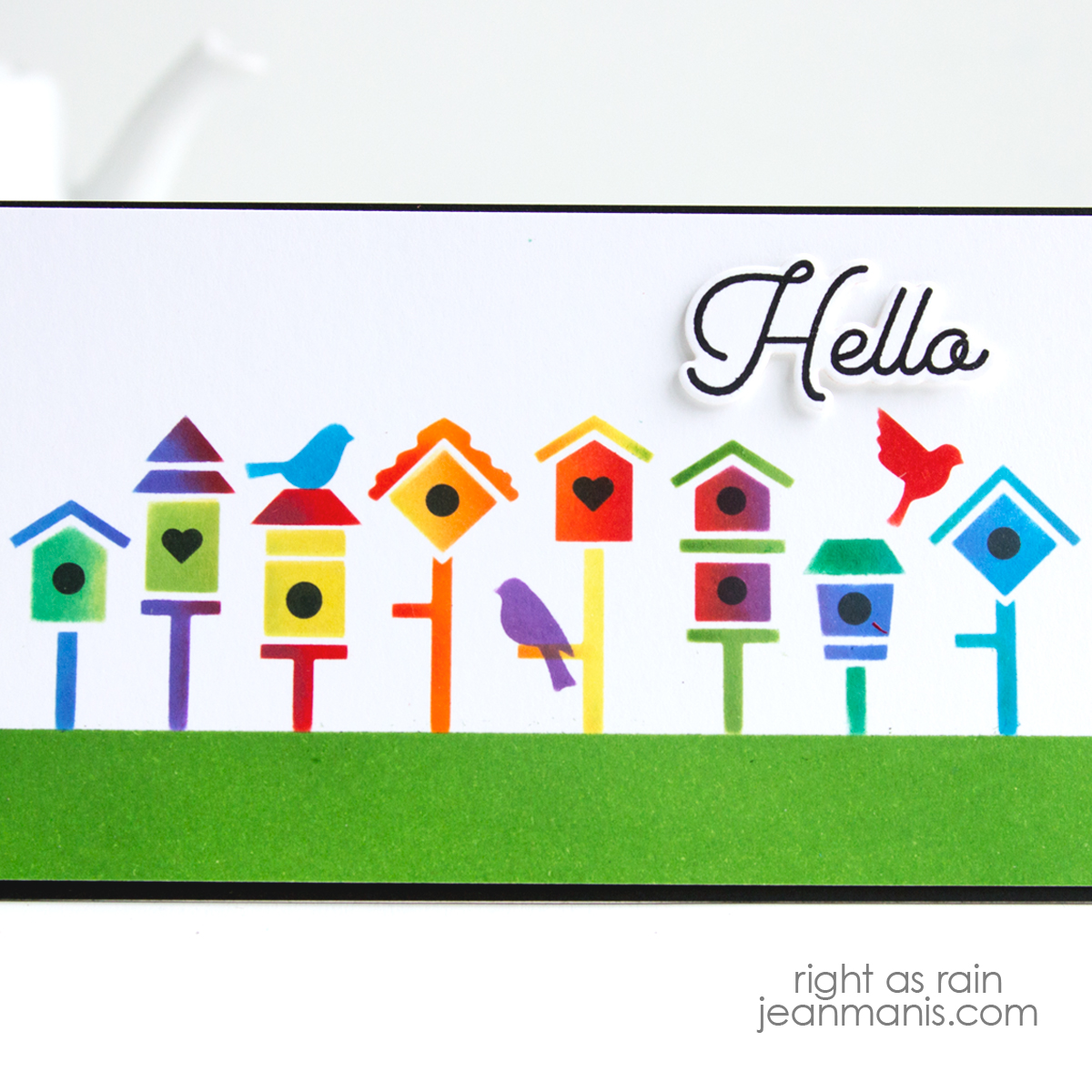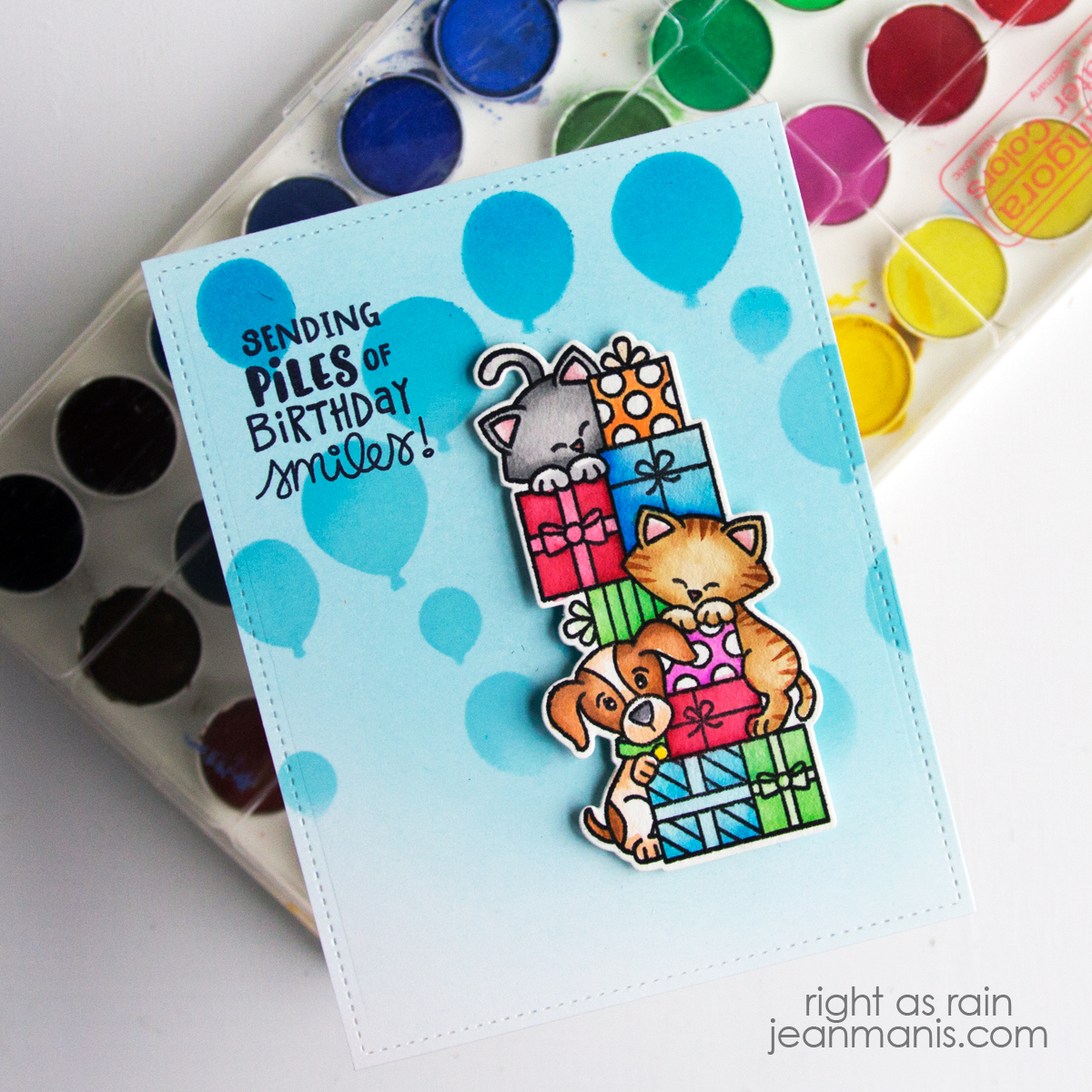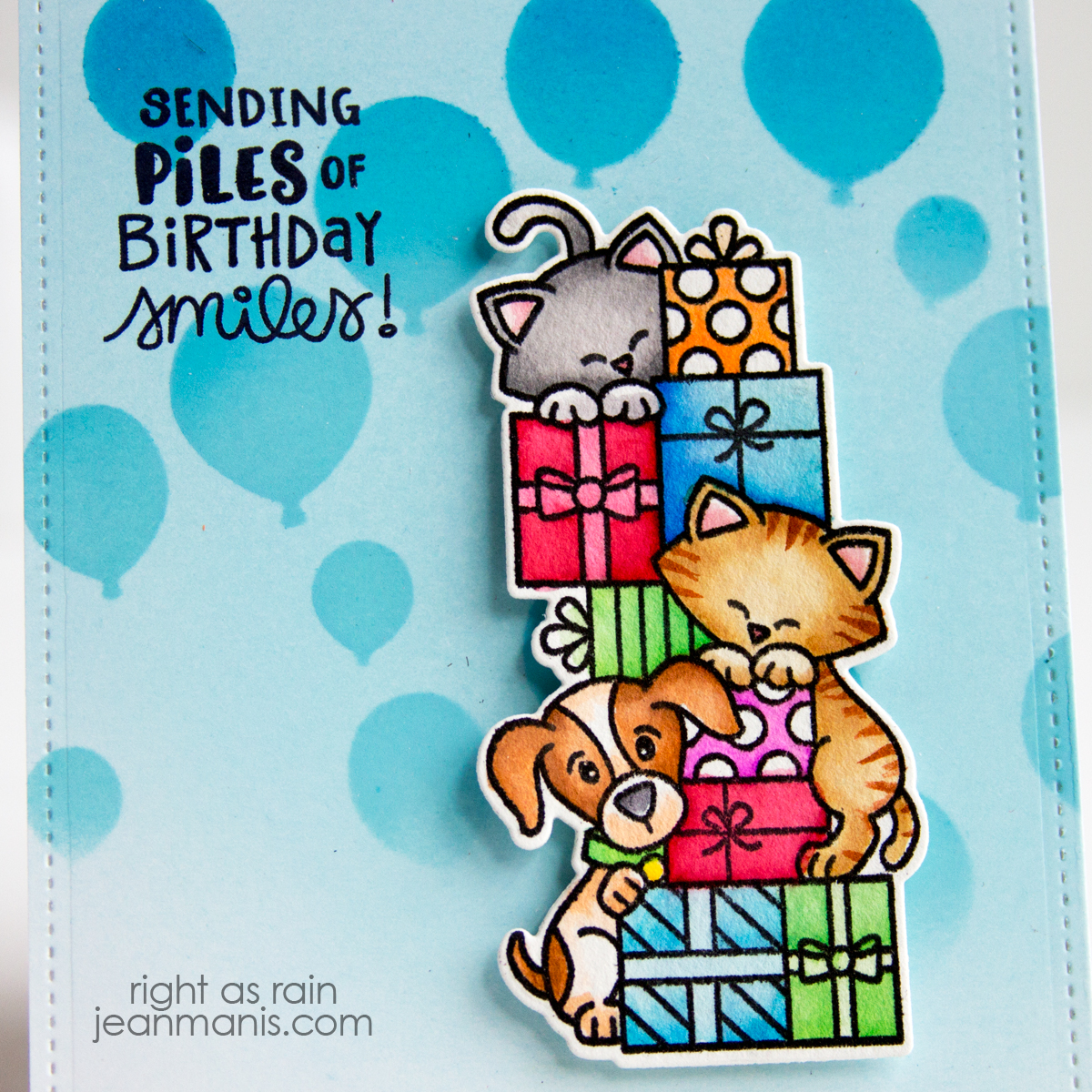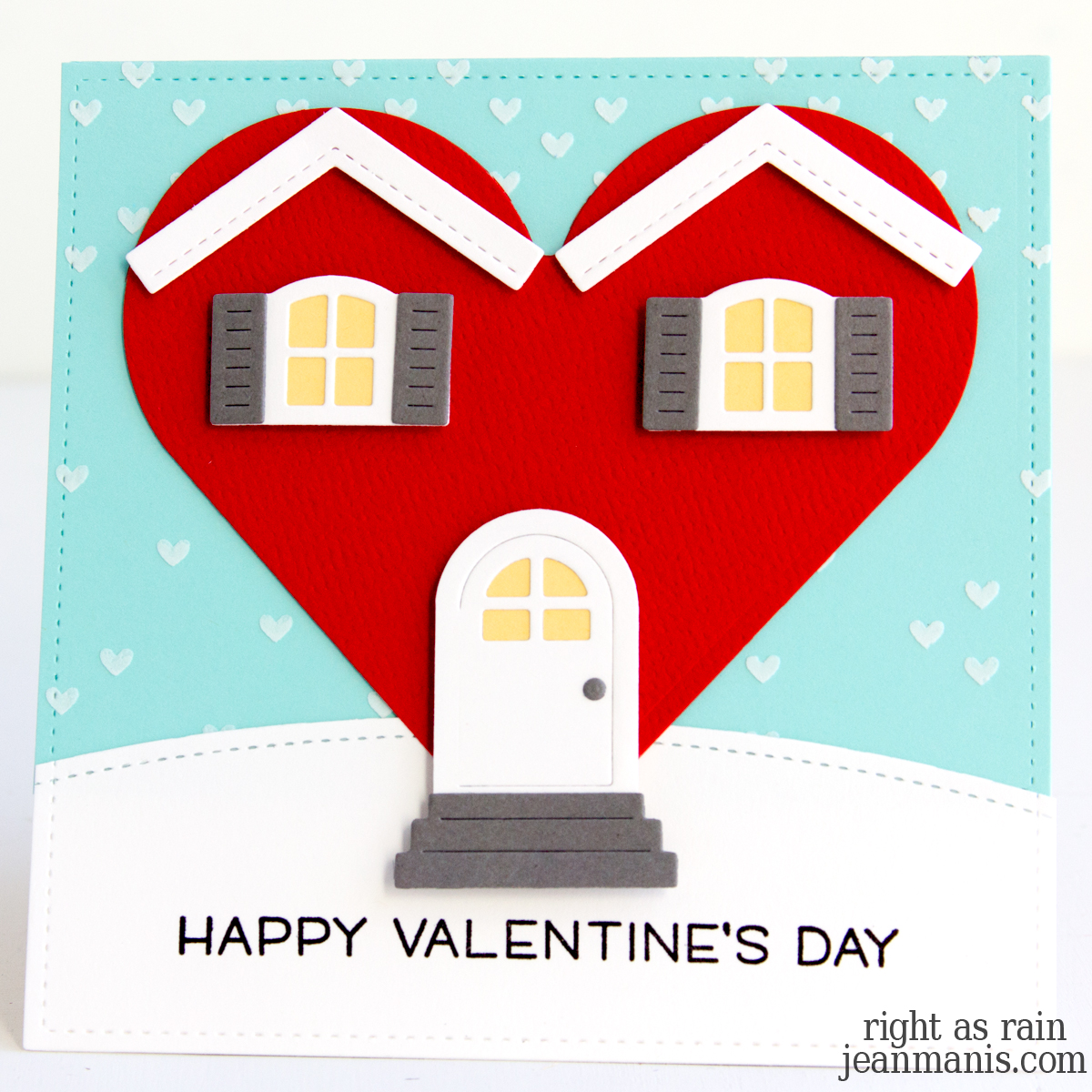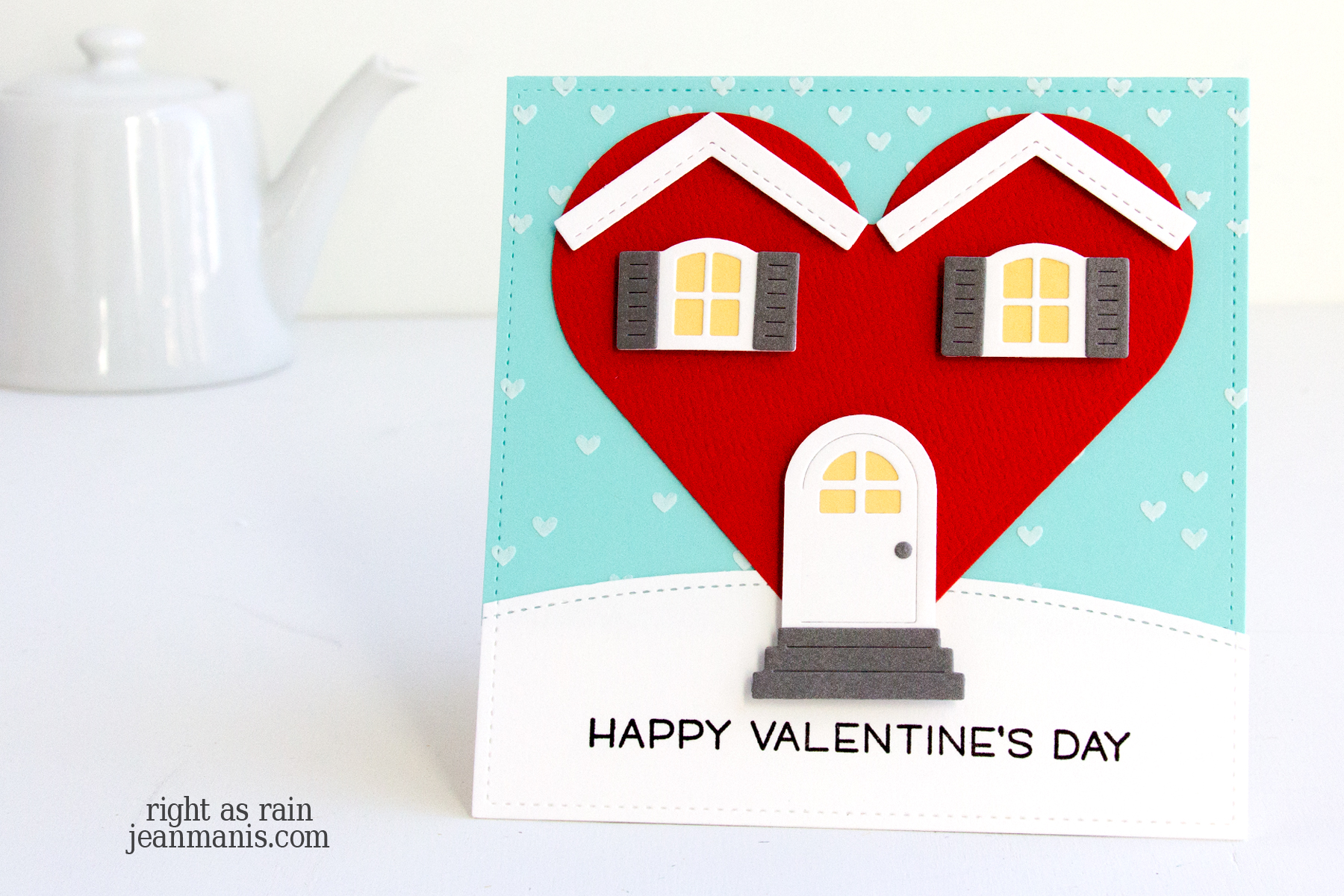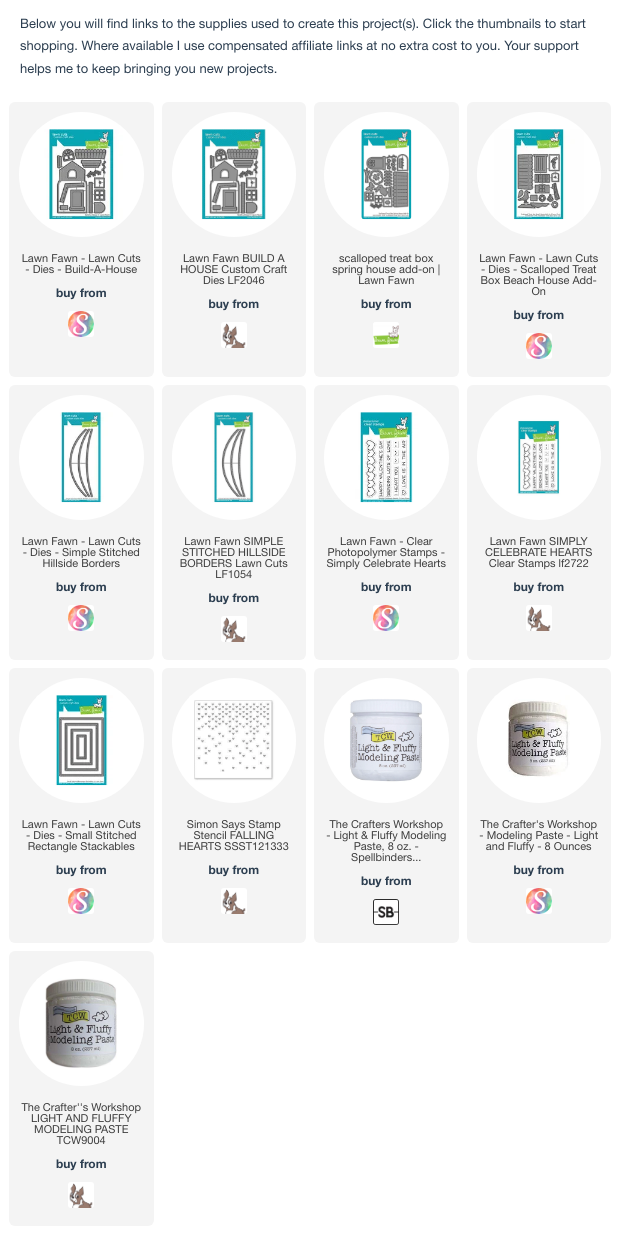Hello! I’m sharing two holiday cards created with the new Candy Cane Collection from Hero Arts. This festive collection includes stamp sets with coordinating dies, a stand-alone sentiment die set, and a versatile layering stencil. I used two different approaches with the stencil set—one uses white embossing paste on red cardstock for a bold, dimensional look, and the other layers white and red ink to build a classic candy cane pattern. Both cards feature the cheerful sentiment “Holiday Vibes and Peppermint Skies,” bringing a fresh twist to holiday cardmaking.
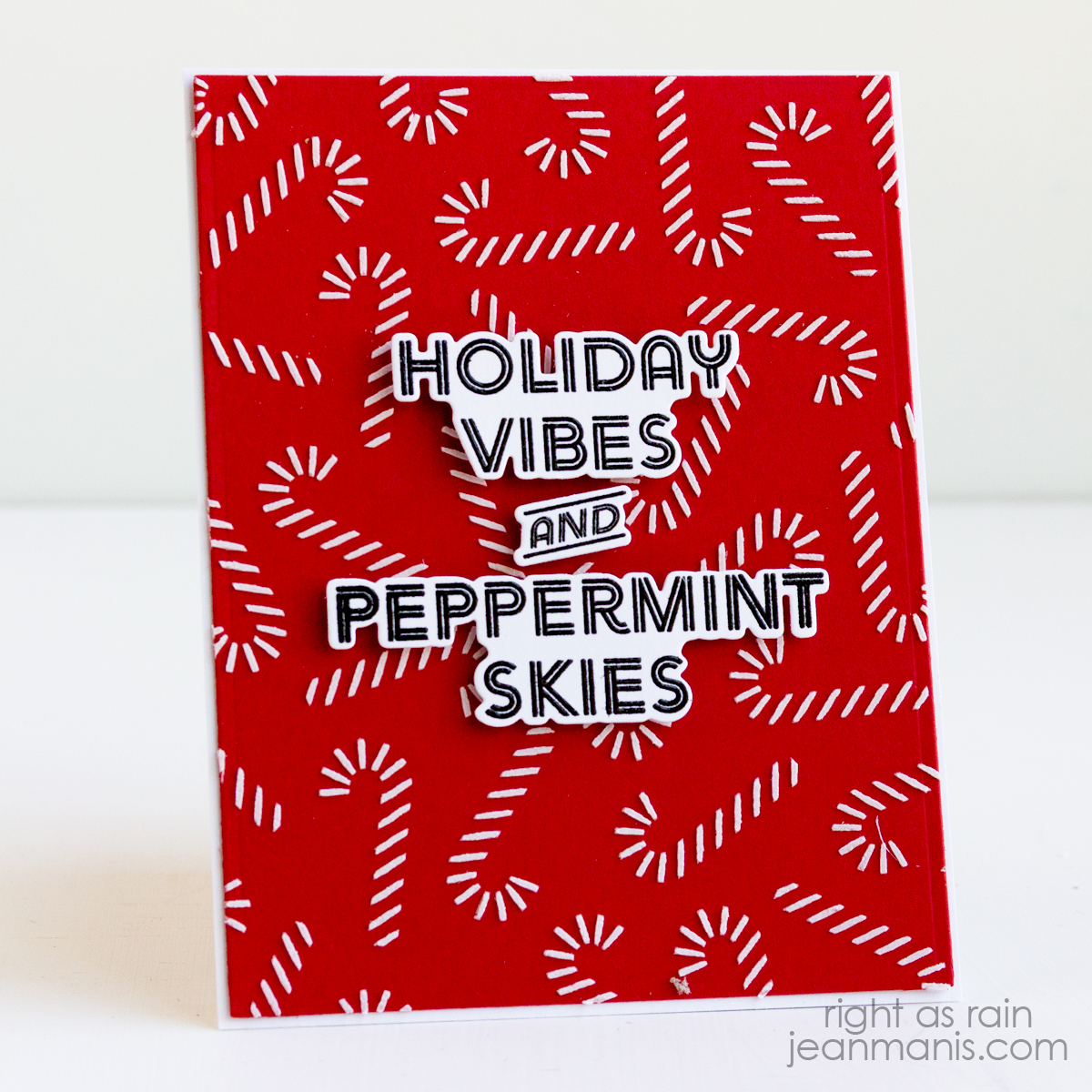
-
- Apply embossing paste through one of the stencils in the Toss Up set on to a Pomegranate cardstock panel. Add to a white card base.
- Stamp the Candy Cane Swag sentiment with black ink on white cardstock and heat-emboss with clear powder. Cut with the coordinating die and add to the card base with foam adhesive.

-
- Ink a Fawn cardstock panel with white ink using one of the Toss Up layering stencils. Once dry, add red ink through another stencil in the set. Add the stenciled panel to the base.
- Stamp the Candy Cane Swag sentiment with Versamark ink on Wild Berry cardstock and heat emboss with white powder. Cut with the coordinating die and add to the card base with foam adhesive.
A bold sentiment over a stenciled background is a reminder that simple choices can lead to striking results!


